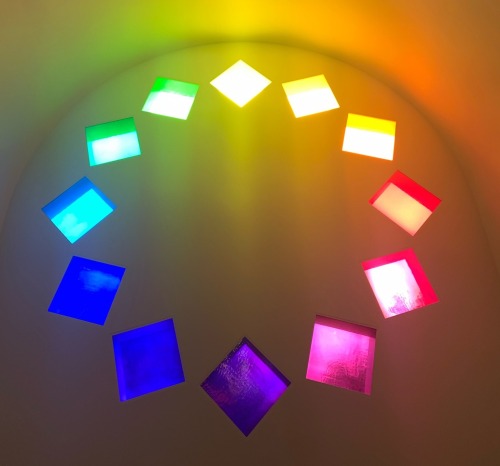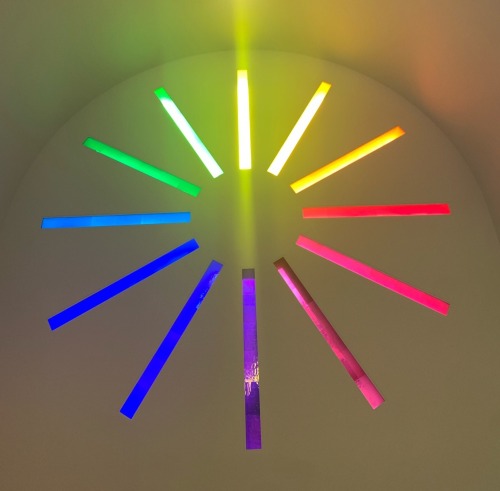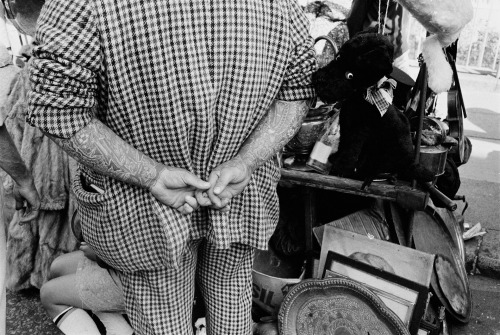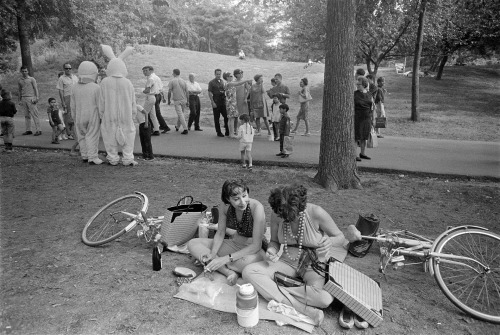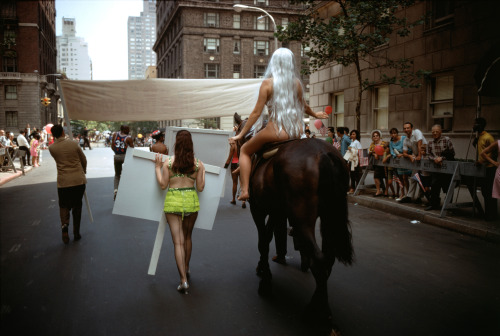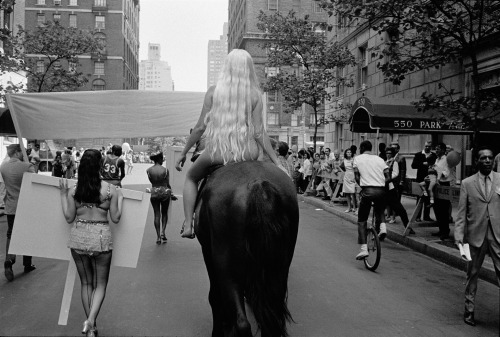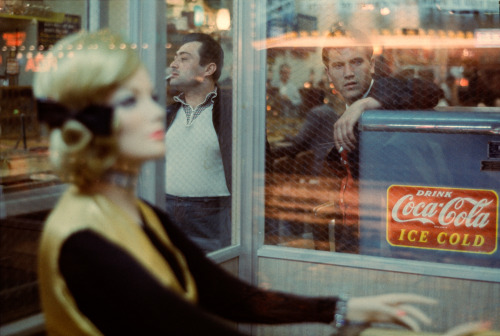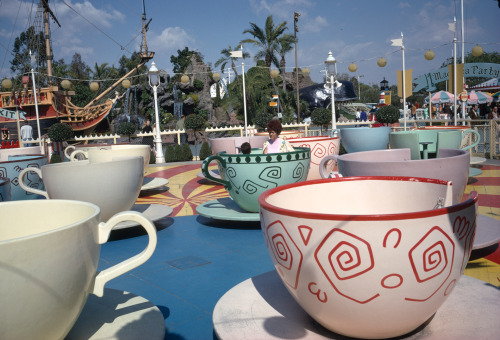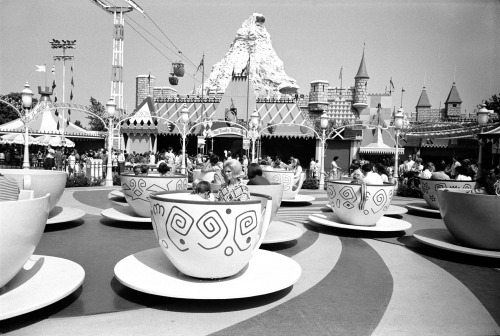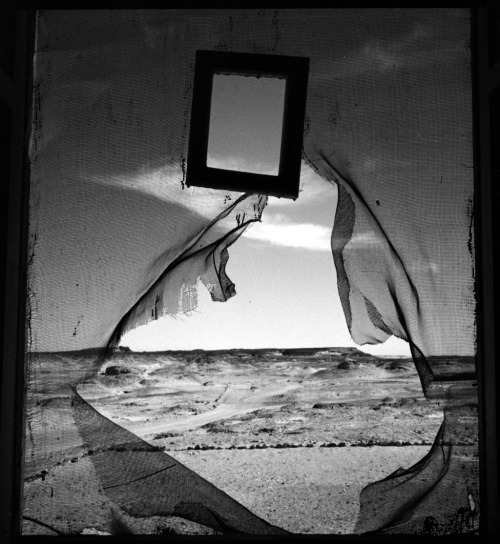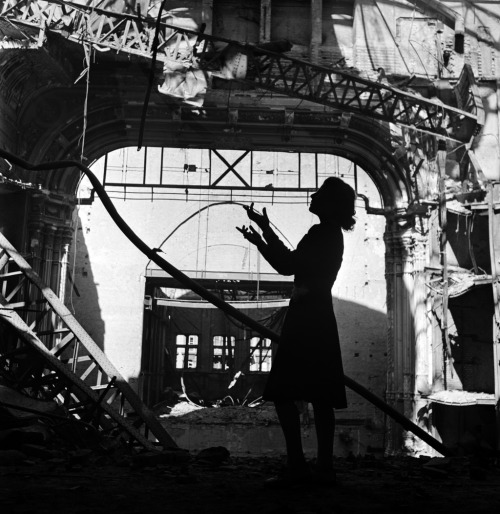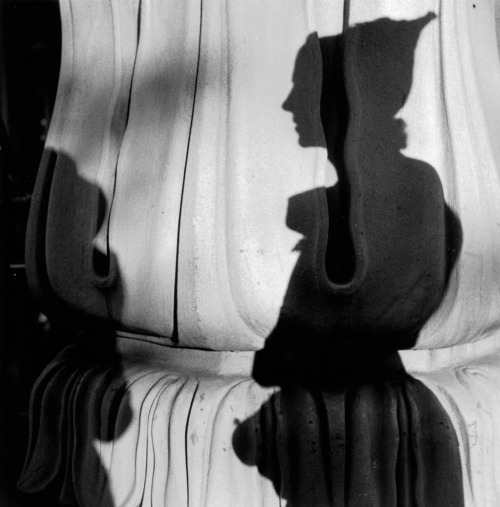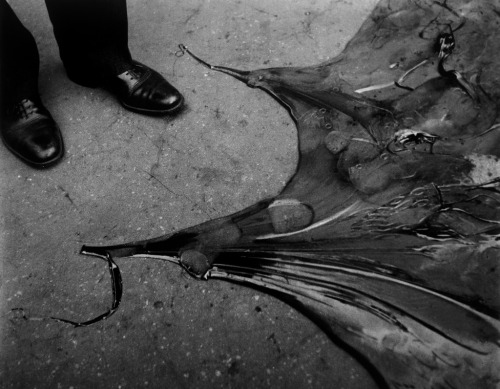
“…To be a human being may be a very messy thing, but to be an artist is something else entirely, because art is religion, art is sex, art is society. Art is everything.” Lucas Samaras
Lucas Samaras’s art has always mystified me. Although I am a late convert to his work, I recognize the passion and energy when I see it. The constant striving. The ongoing pursuit of beauty. The relentless creation.
Along with his drive, there’s a psychological depth to his work and an intense self-awareness that I find irresistibly disturbing, and often scary. Lucas Samaras is playing for keeps.
His latest (and thirty-third) exhibit, XYZ, opened today at Pace gallery. For the uninitiated, here’s a fascinating trailer from a forthcoming documentary about his life, along with an excellent interview by his longtime friend and dealer, Arne Glimcher. –Lane Nevares
Lucas Samaras, (1936-2024), RIP.
“…Art is everything.”
“Photography is about being exquisitely present.” –Joel Meyerowitz
Joel Meyerowitz met Robert Frank in 1962. That chance encounter, serendipity if you like, made all the difference in the life of a young art director and painter. He knew instinctively after witnessing Frank work, that he wanted to be a photographer. That was it. Meyerowitz knew nothing about cameras or photography, but as the course of his life would attest, he was always good with risk.
Thames & Hudson’s Joel Meyerowitz: A Question of Color takes us back to the beginning. Along with the writer and critic, Robert Shore, Meyerowitz tells us why he started carrying two cameras in 1963: one with black & white film, one with color. Early on, he had tried to reconcile “the question of color” at a time when this question was of significance to the arts community. Today, we seamlessly glide between both worlds. Color photography now has all the importance and gravitas of black & white photography, but there was a time when that was not the case. And it was photographers like Joel Meyerowitz who helped us to question why.
Meyerowitz is one of our master street photographers. At age 85, he continues working, and has enjoyed a remarkable career as an artist and educator–having published 53 books, as well as earning numerous distinctions for his pioneering color work. This latest book from Thames & Hudson puts a fresh spin on Meyerowitz’s oeuvre. The photo pairings of black & white vs. color help us feel the tension between the images. We can then answer our own “question of color.” –Lane Nevares
“When I think of all that’s happened to me…it’s enough to drive you insane.”– Gerard (Gerrit) Petrus Fieret (1924-2009)
If you search Wikipedia, you won’t find an entry for Gerard Petrus Fieret. As an artist, he should be considered part of any serious survey of 20th Century photography, yet critical reaction to his work has varied according to the prevailing cultural tastes. Only in the last decade have his photographs achieved the museum-level recognition they deserve. Fieret’s photographs are distinct; and whether you love them, hate them or are indifferent to them, his work is important. For anyone who is curious, Deborah Bell Photographs is currently showing his photographs here in New York.
By most accounts, Fieret was always mentally unwell. The sound and the fury in his head fueled an artistic energy that took him far away from the exceptional hardships he endured surviving the Second World War, and into the 1960′s and 1970′s when, through a camera, he explored and proclaimed his passions.
For a long period he scratched out a living selling art work and objects from various countries, but in the end, Fieret chose a difficult life. After years of turmoil, high jinx, and creative effusion, his final years were spent poor and neglected. He passed in 2009. Gone, but because of his contributions to photography, not to be forgotten. (For more insight, here is a fascinating documentary taken over the last two years of his life.)
Fieret always inscribed his prints, claimed them, stamped them, mishandled them and treated them like he treated his own life. He left thousands of photographs full of a wild power. And he proved in the end, despite the madness, that pursuing Beauty matters. –Lane Nevares
(via artphotocollector)
“…A fact…my developing identity was ensnarled with the camera, its natural power to encode and communicate that which was in front of me and that which was in me.”—Larry Fink
If you don’t know who Larry Fink is, you should: he’s one of our great, American photographers. Primarily known for his celebrity and High-Society, black & white images documenting the rich at play, Fink’s work–and more importantly his intention—has always been deep, philosophical and imbued with his progressive political leanings. As an artist, he’s a man of the moment, in the moment. For as he says, “The photograph is an attempt to give the perception of the moment some relationship to immortality.” As a professor, Fink has gone on to teach generations of young photographers.
Long before he was “Larry Fink,” however, he was just a kid from Brooklyn with a camera. At the age of 17 in 1958, he happened upon a group of local Beatniks in Greenwich Village who allowed him and his camera to be part of their scene, and perhaps, to give immortality to their beat existence. This series which has been crafted into a lovely book, “The Beats,” reveals Fink’s precociousness as a photographer. To be a kid, with no formal photographic training, who can take images this good, tells us many things. One of which is that talent is often innate.
The other thing it demonstrates is that getting an MFA, especially in Photography, is a waste of money. It breaks my heart to meet young photographers who are tens of thousands of dollars in debt, who come out of brand-name MFA programs and suddenly find themselves back at square one. Better to get $50-100K in debt (or not!), traveling the world taking photographs, or spending the money on a meaningful documentary project.
It is the photographers like Larry Fink, who, ironically, never finished college, who go on to be the Professors and the recognized Masters. It is the photographers willing to create their own rules and map their own destinies, who go on to greatness–to be the ones whom we revere and study. The world doesn’t care about an MFA. We want the best you’ve got.–Lane Nevares
Larry Fink, RIP
November 26, 2023.

“I was in love with the whole world and all that lived in its rainy arms.” –Louise Erdrich
Love my city.
“There were lots of things, touching, poignant, or queer I wanted to photograph.” –Lee Miller
Lee Miller led an extraordinary life in her 70 years. While not as appreciated in the photography canon as she deserves to be, or widely known for the pioneering contributions she made, with the publication of Lee Miller: Photographs from Thames & Hudson, along with a new film, Lee, starring Kate Winslet, her story is being freshly shared with a younger generation.
Lee Miller’s story is told in these pages by her son Antony Penrose, who also compiled the more than 100 images that reveal Lee Miller’s diverse interests from surrealism and solarization to fashion and portraiture to wartime photojournalism. For anyone who has not discovered Lee Miller’s work, this new edition from Thames & Hudson is an ideal introduction.
What is not told, respectfully so, is the sexual trauma Lee Miller suffered as a young girl to the peculiar relationship with her father who often photographed her nude. And how these experiences impacted her. Lee Miller endured the best and the worst in people. As a photography correspondent in WWII, she also witnessed the unique horrors of Dachau and Buchenwald concentration camps. While there was much beauty in Lee Miller’s life, there was also much unhappiness.
Yet, what a life! Lee Miller’s legacy endures. Her passion for art, travel and adventure will always inspire. Lee Miller: Photographs, shows us why her work still matters. –Lane Nevares
“New York - I’m connected. This is my core. I feel like if I’m not connected to New York, then I don’t even know what to do with myself.”–Jay-Z
This is the 100th year of the Museum of the City of New York. Tucked away in East Harlem next to El Museo del Barrio, the museum has always housed an impressive collection of photography. For New Yorkers, especially, the museum has held a treasure-trove of our history and culture. Not always given the wider attention it deserves, the MCNY has always been a powerhouse.
Marking its inaugural photography triennial, “New York Now: Home,” the curatorial team solicited images from over a 1000 artists, and found its way down to 33 individuals whom they chose to represent “home” in all of its fluid manifestations. Some of the artists are established and known, while others are emerging. The curators Sean Corcoran and Thea Quiray Tagle have presented us with an array of representation, as diverse and innovative as the city itself.
Featuring the work of established artists such as Anders Jones, Linda Troeller, Maureen Drennan and Jamel Shabazz , New York: Home also shows younger artists like Cheryl Mukherji and Diana Guerra both of whom were new discoveries. The exhibition takes us on a wide-ranging experience through New York. We see it afresh through new eyes. While “home” has infinite meanings that transcend language and location, the representations we see in this inaugural triennial of our great city are as diverse and wonderful as the people who live here. In New York: Home we feel connected. –Lane Nevares
“I don’t pretend to be an intellectual or a philosopher. I just look.”–Josef Koudelka
Chris Killip was one of Britain’s most important documentary photographers, and yet, he has been under appreciated outside of the UK. His contributions to photography and to his students at Harvard, where he taught from 1991-2017 as Professor of Visual and Environmental Studies, have never gained the wider recognition he deserved, until now.
Coinciding with a major retrospective at The Photographer’s Gallery in London, Thames & Hudson has recently published Chris Killip (1946-2020), offering the most comprehensive collection of Killip’s work to date. What we discover poring through the monograph is an artist at home in the communities he photographed. Chris Killip, himself the son of pub managers from the Isle of Man, lived small town life and the quotidian. He also understood class. His sympathies and work with the historic Miner’s Strike in the Thatcher years make it clear. His 1988 landmark book In Flagrante showed us potently how class impacts communities. Thus, his superlative images come through an intimacy of understanding, an acknowledgement of class, and a love for people.
Killip left school at age 16, and probably never imagined he would one day become a tenured Professor at Harvard, or spend the remainder of his life actively engaged as a working photographer. With his passing in October 2020, this new collection of his work is a fitting tribute to his legacy, the people he photographed and the images he left us. Like his old friend Josef Koudelka, Killip wants us “to look” and to see. –Lane Nevares
“Color! What a deep and mysterious language, the language of dreams.” – Paul Gauguin
The yearning to capture the world in color has always been with us. Whether it was painting on walls in caves, crafting vegetable dyes for textiles, the development of oil paints, to experimenting with chemistry in photographic processes–the allure of color has motivated artists to represent the world as they experience it.
The autochrome, an ephemeral photographic process patented in 1903 by the Lumière brothers, released commercially in 1907, and produced until the mid-1930′s, changed the possibilities of photography. Over a hundred years ago, what was once only available in monochrome, became possible for photographers–without great technical skill or a different camera–to capture the world in color as they saw it. During the brief 30-year history of the Lumière manufactured glass plates, photographers produced hundreds of thousands of autochromes. However, because of their inherent fragility and sensitivity to light, autochromes would later be supplanted by other more practical photographic processes, particularly the rise of Kodachrome in 1935. Alas, the autochrome would fade to memory.
Drawing on the resources of the Victoria & Albert Museum in London, which houses one of the most extensive collections of autochromes, Color Mania: Photographing the World in Autochrome by Catlin Langford is a scholarly and considered reminder of our yearning for color. This new publication from Thames & Hudson reveals work that has never been shown, and helps us to understand the significance of autochromes in our shared photographic history.
To see the early 20th century in color is to see the world anew. The work of long forgotten photographic pioneers like Helen Messinger Murdoch, who was the first woman to travel the world taking autochromes, is included in the book. Her travel pictures from the early 1900′s remind us how modern autochromes can seem. We magically and immediately experience the past in color. The lush, painterly, pointillism look of the autochrome is unique. And like a language we have not heard in a long time, the images in Color Mania remind us how deep and mysterious that language can be. –Lane Nevares
“Reform can only be accomplished when attitudes change.”–Lillian Wald
Autumn is New York is a delight for many reasons. From the colors to the changing light to the fashion and energy in the art world, the city is alive and flourishing. It is an exciting time to see great work, whether it’s a major museum show, a smaller solo exhibition, auction house preview, or a distinguished art fair.
The Art Dealers Association of America’s (ADAA) The Art Show was founded as a non-profit art fair in 1989 to support the work of the venerable 130 year-old Henry Street Settlement. To date, The Art Show has raised more than $35 million for the organization, demonstrating how art and community can work together for the common good.
This year’s art fair, now in it’s 34th iteration, runs from November 3rd-6th. The show is a must-see and is their largest one yet, with 78 member galleries represented. I am particularly excited to see the work of Harold Mendez and Nyeema Morgan of Chicago’s Patron Gallery. Founded by Julia Fischbach & Emanuel Aguilar, Patron Gallery’s roster of artists is diverse, inclusive and a great insight into what is happening in contemporary art. Along with ADAA’s other prestigious member galleries, many of whom are showing the finest work available today, there is plenty to discover. –Lane Nevares
